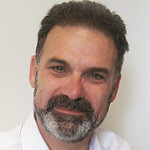Stem cell progress: Turning skin cells into heart cells
Embryonic stem cell research��continues to be��a political and�� hot potato��that stirs up a lot of emotion and��argument.
In the meantime, researchers are making some remarkable progress using��an alternative stem cell approach called induced pluripotent��stem cells, or iPSCs (sometimes that gets�� shortened to iPS).
An induced pluripotent stem cell is��an adult cell, often a skin cell, that has been “reprogrammed�� so it��takes on the pluripotent properties of an embryonic cell. Pluripotency in this context means the capacity for a cell to��generate cells of all different types. If a cell is pluripotent, it can give rise to blood cells, heart cells, kidney cells, brain cells—you name it.
Researchers at the are reporting��in tomorrow’s��The New England Journal of Medicine (NEJM) that they have generated working��heart muscle cells—cardiomyocytes—from human skin cells using iPSCs. That’s��quite a feat, but the German research team��acknowledge that it has been done before (stem cell research is competitive, so firsts are important).
Their��innovation was producing��functional��cardiomyocytes from people��with an��inherited condition—in this case��, which��can lead to potentially fatal heart arrhythmias.
The heart cells their experiments��produced��had��the genes that cause��long-QT syndrome type 1.��Moreover, they��behaved like long-QT type 1��cardiomyocytes. When stimulated, they showed the same kind of abnormal electrical activity.��They also responded to a propranolol, a beta blocker, in the same way��“real”��cardiomyocytes from a long-QT syndrome type 1 patient would.
Obviously you wouldn’t use��these flawed cells to fix the heart of someone with the disease.��But having��iPSC-generated human��cells��that are specific to a patient��and a particular condition could��prove to be an ideal��testing ground for research and drug development.��
, a cardiovascular researcher at the Harvard Stem Cell Institute and Harvard-affiliated Beth Israel Deaconess Medical Center,�� wrote an editorial about this study that was published in��same issue of NEJM. This is how he put it:
Although much excitement has been generated by the potential for therapeutic delivery of such cells [iPSCs]��for tissue regeneration, considerable challenges remain to make this a practical reality. A more immediate application of this technology that may also have important implications for human health lies in the development of cellular models for disease genetically matched to specific patients. Such models provide a human context for unraveling disease pathophysiology, validating therapeutic targets, and examining the response to pharmacologic interventions.
The��German researchers used a retrovirus to carry four genes into��the skin cells to turn them into iPSCs.�� That is now the tried and true method for making iPSCs, but��using��retroviruses��to reprogram cells raises legitimate concerns about retroviral��DNA��getting into the host cell’s genome and��possibly having��cancerous and other harmful effects.
, a Harvard Stem Cell Institute researcher, has used adenoviruses, which cause the common cold, to��ferry genes into cells and create iPSCs. Adenoviruses don’t insert themselves into the genome of��host cells, so they would presumably be safer than retroviruses.
And just��last week, another Harvard researcher, , reported that his research group had successfully��reprogramned human skin cells into iPSCs using��RNA,��avoiding the use of viruses altogether.
Does all this progress with��iPSCs mean there’s no longer a need��for embyonic stem cell research? It’s a question freighted with��political as well as scientific and medical��significance.
“No”�� is��the emphatic answer from the overwhelming��majority of stem cell researchers. The prevailing opinion in the field��is that even if all the concerns about viral DNA and how pluripotent cells are generated were assuaged, there are��still��unresolved questions about whether iPSCs can ever be as��pluripotent as��the stem cells that come from��embryos. After all, embryonic stem cells are, in a sense, naturally pluripotent and don’t have to be induced into a primordial stem state.����
There’s some reason to believe that��the cells that��iPSCs��come��from may��imprint them��in some way that sets��limits on��the cells they’re�� able to generate.��Perhaps iPSCs��can generate some cells, not others, or there are flaws in the cells they do produce.
In an interview yesterday,��Hochedlinger pointed to��earlier this year that show��certain important “gene clusters�� are inactive in����iPSCs but�� not in embryonic stem cells (although there do seem to be ways that the iPSC gene clusters could��be activated).
Here is��a relevant excerpt from a��profile of , director of��the National Institutes of Health, in the September 6, 2010, issue of The New Yorker magazine (the Thomson-Yamanaka breakthrough is a reference to��iPSCs):
When I asked Collins about the Thomson-Yamanaka breakthrough��he said that not enough was yet known about such cells to guess whether they have the same therapeutic potential as embryonic stem cells. For example, scientists have learned that the pluripotent cells derived from adult tissues retain some memory of that tissue. “Will that matter for the therapeutic uses we all dream of?�� he asked. “No one knows, but it would be foolish now to proceed without comparing them at every step to the gold standard for pluripotency—and that remains the human embryonic stem cell. So it’s not ‘either/or�� that we should be pursuing. It’s ‘both/and.�� ��
About the Author

Peter Wehrwein, Contributor, �첩����
Disclaimer:
As a service to our readers, �첩���� Publishing provides access to our library of archived content. Please note the date of last review or update on all articles.
No content on this site, regardless of date, should ever be used as a substitute for direct medical advice from your doctor or other qualified clinician.












